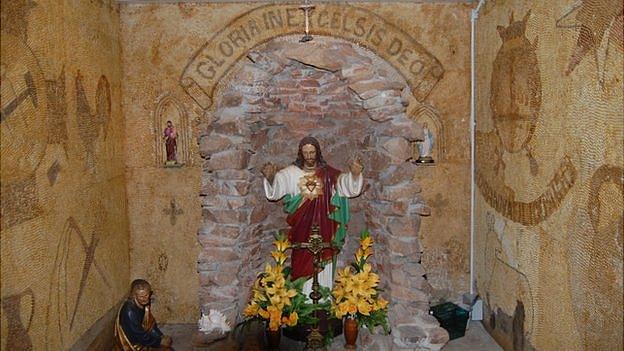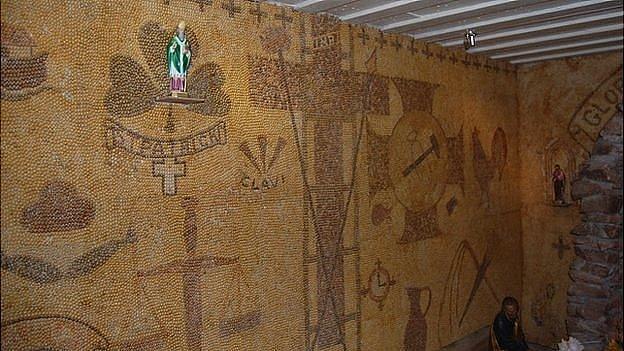Shell shrine in WW2 bunker to be run by Guernsey States
- Published

The shrine was reopened in 2008 after three years of restoration work
A religious shrine made of shells and built in a Nazi fortification will be maintained by Guernsey's government.
Hubert Le Galloudec used shells he picked off the beach to depict Bible stories in the World War Two bunker on the island's west coast.
The completed shrine was opened in the 1960s, but closed in 1971 after it was vandalised.
It was reopened in 2008 after three years of restoration work by volunteers, who now want to step down.
Mike Garrett, one of the four volunteers who open the site fortnightly on Saturdays, said after nine years they felt the time was right to pass on its upkeep.
He said it was "not something we should lock away forever".
Dr Jason Monaghan, museums director for the Culture and Leisure Department, said the site would continue to be open to the public, but "not necessarily on the same basis as it was".
He said the department owned and maintained the whole Fort Hommet site and the additional running costs - mainly of a generator to power the lights - were "quite small" and would "not worry us".


Shrine at Fort Hommet
Hubert Le Galloudec worked by lamplight to create the designs in porcelain and shells in the bunker
The designs depict scenes and stories from the Bible
During World War Two the bunker housed a 60cm (2ft) searchlight which was wheeled out on a railway track to the end of a nearby Victorian gun position
The bunker was of one of 12 fortifications that made up Stutzpunkt Rotenstein (Fort Hommet) - one of a network of heavily fortified positions around the coast
The fortifications were built during the German Occupation of the island during World War Two

Dr Monaghan said: "We're in discussions with various parties about the possibilities of arranging special open days, one-off openings for special guided tours and things of that nature.
"Here's a building that was built by the Germans or by their slave workers as part of the war effort that has actually been converted to a religious shrine.
"It's a very interesting conversion of a building - almost a swords to ploughshares kind of concept."

Periwinkle and ormer shells were among those used to cover the walls and floors of the bunker

The concrete structure that houses the shrine was built as part of Hitler's Atlantic Wall
- Published1 March 2011